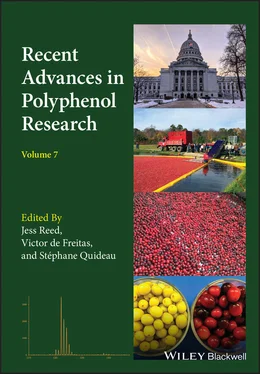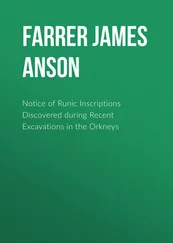Recent Advances in Polyphenol Research
Здесь есть возможность читать онлайн «Recent Advances in Polyphenol Research» — ознакомительный отрывок электронной книги совершенно бесплатно, а после прочтения отрывка купить полную версию. В некоторых случаях можно слушать аудио, скачать через торрент в формате fb2 и присутствует краткое содержание. Жанр: unrecognised, на английском языке. Описание произведения, (предисловие) а так же отзывы посетителей доступны на портале библиотеки ЛибКат.
- Название:Recent Advances in Polyphenol Research
- Автор:
- Жанр:
- Год:неизвестен
- ISBN:нет данных
- Рейтинг книги:5 / 5. Голосов: 1
-
Избранное:Добавить в избранное
- Отзывы:
-
Ваша оценка:
- 100
- 1
- 2
- 3
- 4
- 5
Recent Advances in Polyphenol Research: краткое содержание, описание и аннотация
Предлагаем к чтению аннотацию, описание, краткое содержание или предисловие (зависит от того, что написал сам автор книги «Recent Advances in Polyphenol Research»). Если вы не нашли необходимую информацию о книге — напишите в комментариях, мы постараемся отыскать её.
Recent Advances in Polyphenol Research
Recent Advances in Polyphenol Research — читать онлайн ознакомительный отрывок
Ниже представлен текст книги, разбитый по страницам. Система сохранения места последней прочитанной страницы, позволяет с удобством читать онлайн бесплатно книгу «Recent Advances in Polyphenol Research», без необходимости каждый раз заново искать на чём Вы остановились. Поставьте закладку, и сможете в любой момент перейти на страницу, на которой закончили чтение.
Интервал:
Закладка:
The XXIX ICP and 9th TC were attended by 189 registrants from 23 countries, with 62 invited and contributed presentations and 104 posters. This seventh edition of Recent Advances in Polyphenol Research presents 11 chapters that represent the work of the invited speakers at the XXIX ICP and 9 thTC and reflect the depth of science in this important field of natural product chemistry. The conference included sessions on the chemistry and physical chemistry of polyphenols; synthesis, genetics and metabolic engineering of polyphenols; the effects of polyphenols on the nutrition and health of humans and animals; the role of polyphenols in plants and ecosystems; applied research on polyphenols; and a special session devoted to the 9 thTannin Conference.
We owe a special thanks to Hannah Scott and Laura Richards from the Campus Events Services, UW–Madison, for their professional and excellent organization of the conference. Finally, we thank all of the participants, some who traveled a great distance to come to Madison, for making the conference a very enjoyable event and a wonderful learning experience.
Jess Dreher ReedVictor Armando Pereira de FreitasStéphane Quideau
Acknowledgements
The editors wish to thank all of the members of the Groupe Polyphénols Board Committee
(2016–2018 & 2018–2020) for their guidance and assistance throughout this project.
Groupe Polyphénols Board 2016– 2018 & 2018–2020
Dr. Denis Barron
Dr. Luc Bidel
Dr. Catherine Chèze
Dr. Peter Constabel
Prof. Olivier Dangles
Dr. Kevin Davies
Prof. M Teresa Escribano
Prof. Victor Armando Pereira de Freitas
Prof. Kazuhiko Fukushima
Dr. David Gang
Dr. Sylvain Guyot
Prof. Ann E. Hagerman
Prof. Heidi Halbwirth
Prof. Amy Howell
Dr. Stefan Martens
Dr. Fulvio Mattivi
Dr. Irene Mueller‐Harvey
Prof. Stéphane Quideau
Prof. Jess Dreher Reed
Dr. Erika Salas
Prof. Juha‐Pekka Salminen
Prof. Kathy Schwinn
Dr. David Vauzour
Prof. Kristiina Wähälä
1 Achieving Complexity at the Bottom Through the Flavylium Cation‐Based Multistate : A Comprehensive Kinetic and Thermodynamic Study
Johan Mendoza and Fernando Pina
Department of Chemistry, Nova School of Science and Technology, Caparica, Portugal
1.1 Introduction
Complexity is ubiquitous in biological systems. The main strategy to study complexity has been carried out using a top‐down approach. Though the top‐down approach the simpler components of the complex systems are identified, and whenever possible, up to the molecular level. In contrast, supramolecular chemistry, a concept well established and recognized after the 1987 Nobel Prize awarded to Donald J. Cram, Jean‐Marie Lehn, and Charles J. Pedersen, is a bottom‐up approach ( Figure 1.1). Supramolecular chemistry studies how molecules interact to form higher‐dimension entities and tends to fill the gap between “classical chemistry” and biology (Lehn, 1995).
A beautiful example of supramolecular chemistry is the structure of the metalloanthocyanin that gives color to Commelina communis (Kondo et al. 1992; Yoshida et al. 2009). An anthocyanin, a flavone, and a metal ion in a ratio 6:6:2 are organized into two parallel plans, each one containing three anthocyanins, three flavones, and one metal ion that organizes the space Figure 1.1.
There is an alternative to achieve complexity that we coin metamorphosis (Petrov et al. 2012). When a molecule (generator) is able to be transformed into other molecules by means of successive conversions and as a response to external stimuli, new molecules are formed. The complexity results from the number of the species and everything takes place at the bottom.
The pH‐dependent multistate of species of anthocyanins and related compounds is a paradigm of the metamorphosis concept; see Scheme 1.1.
1.2 Flavylium Cation as a Metamorphosis Generator
The flavylium cation, AH +, is the most stable species at very low pH values, in anthocyanins generally for pH<1. The system is conveniently studied by direct pH jumps when base is added to the flavylium cation, and reverse pH jumps , defined as addition of acid to equilibrated solutions at higher pH values. After a direct pH jump to moderately acidic pHs, the flavylium cation equilibrates in microseconds with quinoidal base, A eq. (1). The next step is the formation of the hemiketal, B, through the hydration of AH +(min) eq. (2), followed by the ring opening to form cis ‐chalcone, Cc, (ms) eq. (3). The fact that the quinoidal base does not open in acidic medium is a breakthrough discovery (Brouillard and Dubois 1977) crucial for the comprehension of anthocyanins and related compounds systems. The Ccisomerization to trans ‐chalcone, Ct, in anthocyanins takes place in several hours eq. (4). When the system is equilibrated in moderately acidic pH values, a reverse pH jumps restores the flavylium cation. The following set of equilibrium reactions accounts for the system:
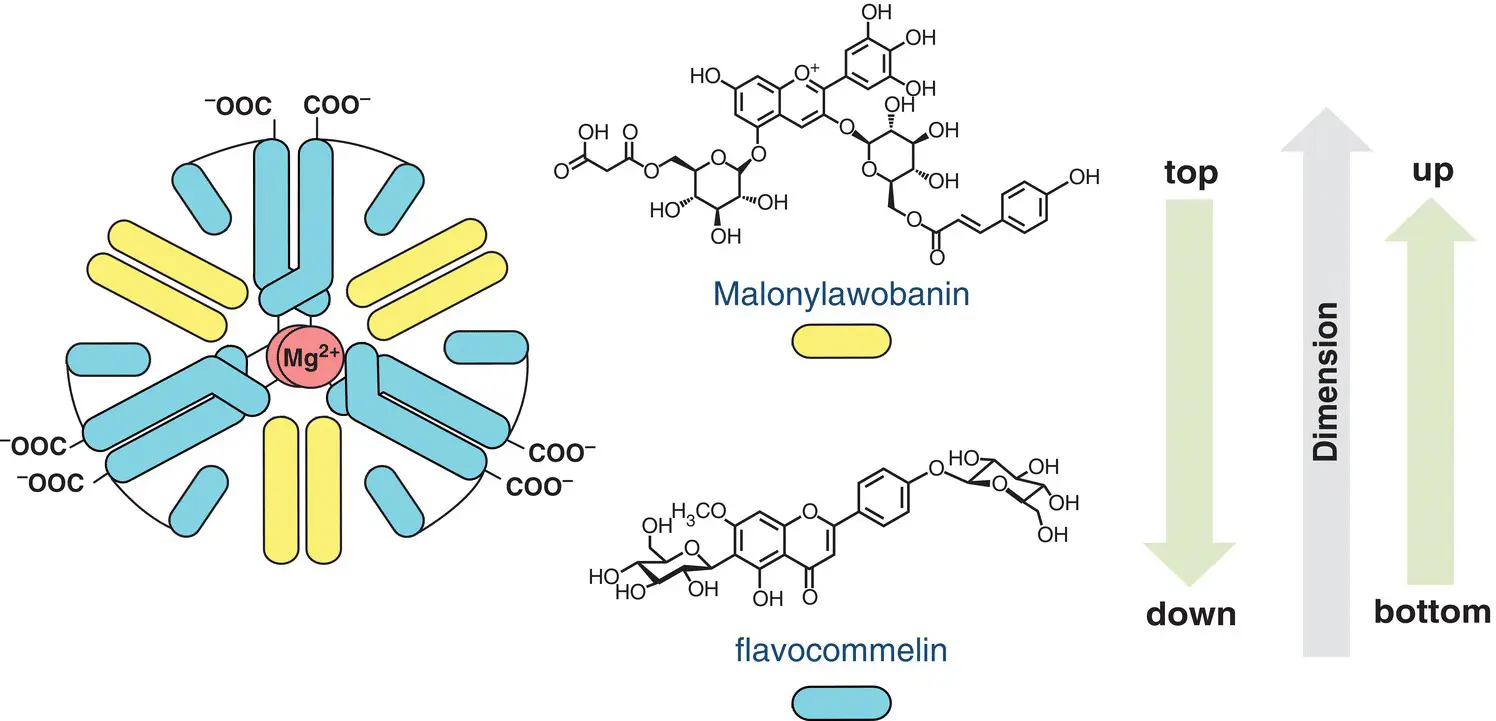
Figure 1.1 Sketch of the metalloanthocyanin responsible for the color in Cummelina communis . The building blocks self‐associate to create the supramolecule in a bottom‐up approach.
Source: Courtesy of Prof. Kumi Yoshida.
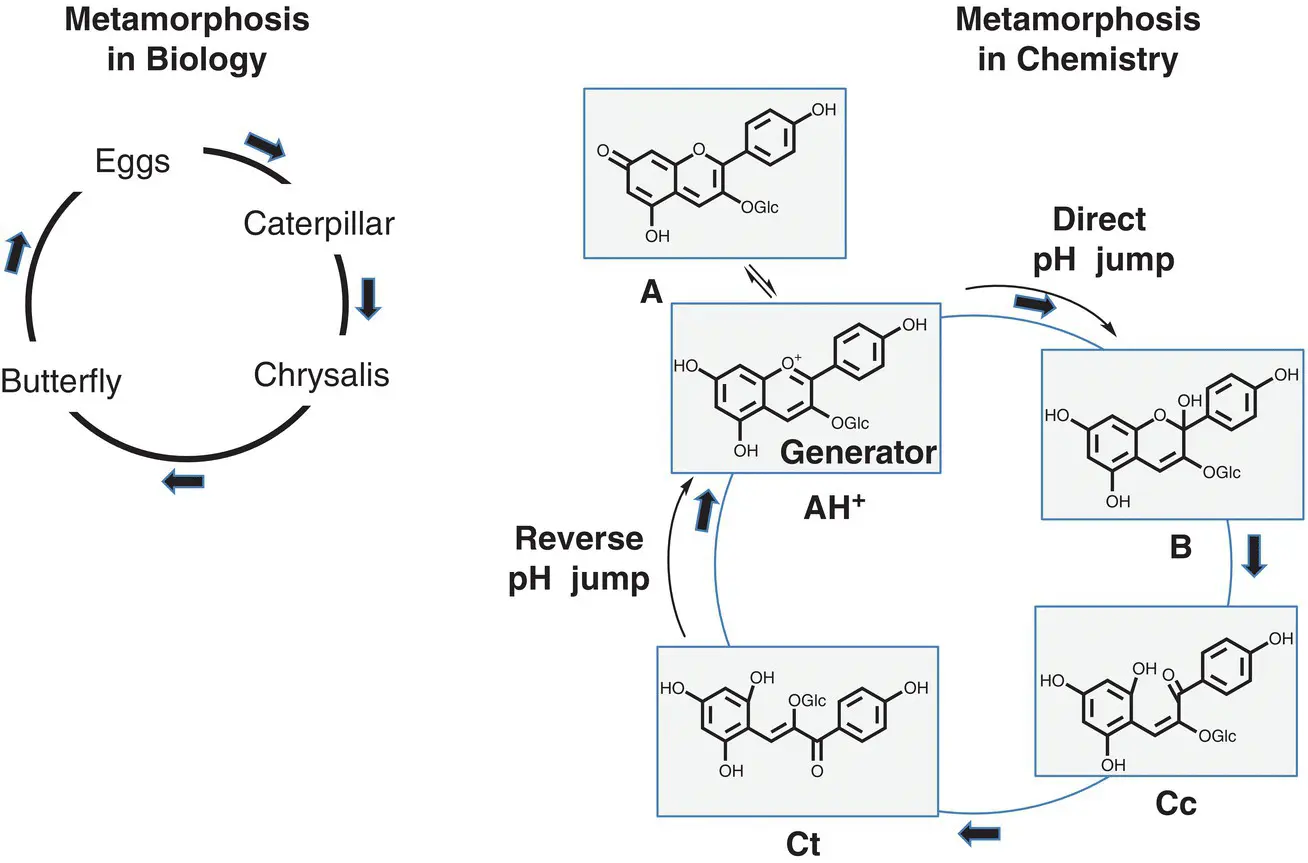
Scheme 1.1 The metamorphosis concept in biology and in chemistry applied to anthocyanins and related compounds in acidic medium.
Source: Reproduced from Mendoza et al. (2018), with permission.
(1) 
(2) 
(3) 
(4) 
A few years ago we introduced an energy level diagram that accounts for the thermodynamic of the anthocyanin system in acidic medium (Pina et al. 1997; Pina 2014a). This diagram can be straightforwardly constructed provided that the equilibrium constants, eq. (1)to eq. (4), of the system have been determined, see Scheme 1.2.
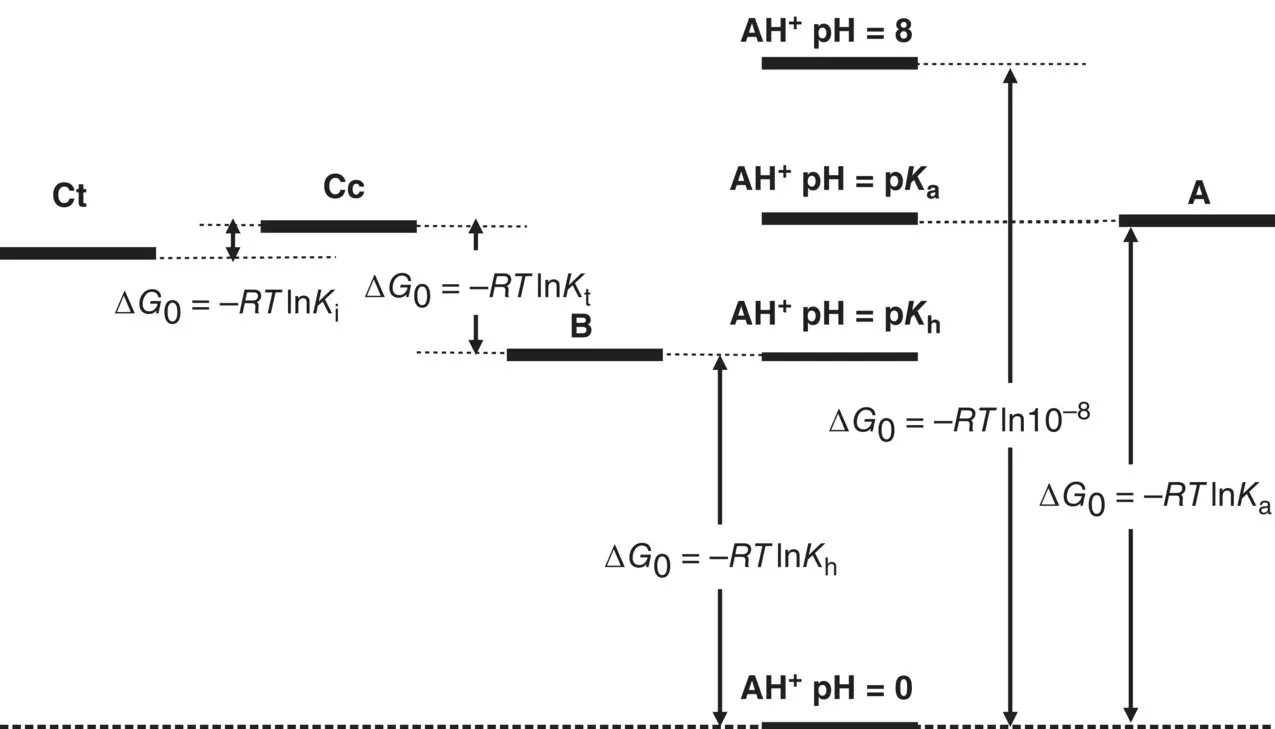
Scheme 1.2 Energy level diagram for anthocyanins and related compounds in acidic medium.
Source: Adapted from Pina 2014a. © 2014 John Wiley & Sons.
1.3 Extending the Multistate of Anthocyanins and Related Compounds to the Basic Region
In many flavylium derivatives from natural or synthetic origin, including anthocyanins, it is indispensable to extend the multistate study to basic medium.
Читать дальшеИнтервал:
Закладка:
Похожие книги на «Recent Advances in Polyphenol Research»
Представляем Вашему вниманию похожие книги на «Recent Advances in Polyphenol Research» списком для выбора. Мы отобрали схожую по названию и смыслу литературу в надежде предоставить читателям больше вариантов отыскать новые, интересные, ещё непрочитанные произведения.
Обсуждение, отзывы о книге «Recent Advances in Polyphenol Research» и просто собственные мнения читателей. Оставьте ваши комментарии, напишите, что Вы думаете о произведении, его смысле или главных героях. Укажите что конкретно понравилось, а что нет, и почему Вы так считаете.
